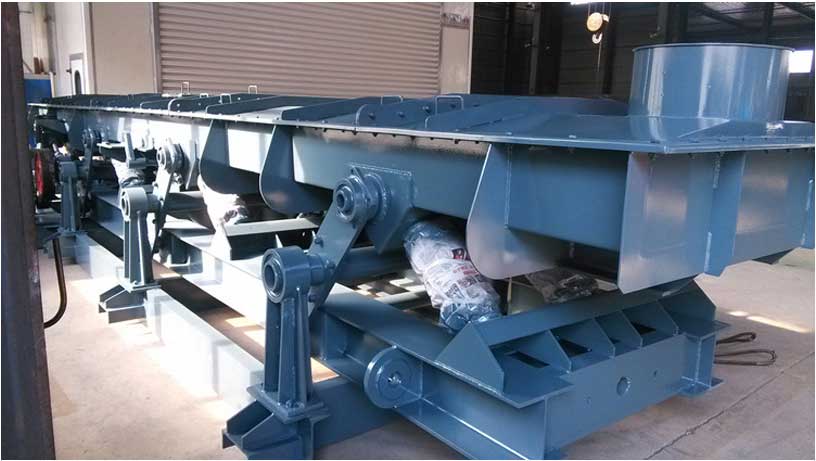Vibrating conveyors are widely utilized in various industries to transport bulk materials. To ascertain the efficiency and performance of this type of conveyor, it is essential to determine its capacity. The conveyor’s capacity indicates the volume of material that can be transported over a specific distance within a given time frame.

Formula for Calculating the Capacity of Vibrating Conveyors
The capacity of a vibrating conveyor can be calculated using the following formula:
q = Kd x a x n x v x 60 x t x Φ / 2 x 1000
- Where:
- q = the capacity of the vibrating conveyor (kg/m)
- Kd = coefficient of friction
- a = cross-sectional area of the material on the belt (m²)
- n = conveyor speed (m/s)
- v = speed of material on the belt (m/s)
- t = belt thickness (m)
- Φ = belt angle of wrap at drive pulley
Explanation of the Formula Terms
- Coefficient of Friction (Kd): Coefficient of friction is the ratio of the force required to move the material on the belt to the force holding the material. This factor helps determine the amount of energy required to move material on the conveyor.
- Cross-Sectional Area of the Material (a): Cross-sectional area refers to the area of the material in contact with the conveyor belts as it moves.
- Conveyor Speed (n): Conveyor speed refers to the conveyor’s speed in meters per second (m/s). Conveyor speed can be determined by measuring the distance over time that the material travels in the conveyor.
- Speed of Material on the Belt (v): The material speed on the belt is the speed at which the material travels while on the conveyor. It is calculated using the conveyor speed and the angle of wrap at the drive pulley.
- Belt Thickness (t): The thickness of the belt refers to thickness, often expressed in meters (m).
- Angle of Wrap at Drive Pulley (Φ): The angle of wrap is the angle formed between the belt and the drive pulley, and it determines the amount of traction necessary to move the material.
Steps in Calculating the Capacity of a Vibrating Conveyor
- Determine the coefficient of friction (Kd) between the material and the conveyor belt.
- Measure the cross-sectional area (a) of the material on the belt.
- Determine the conveyor speed (n) in meters per second.
- Determine the speed of material on belt (v) using the conveyor speed value and the angle of wrap at the drive pulley.
- Determine the belt thickness (t) in meters.
- Define the angle of wrap at the drive pulley (Φ) in radians.
- Apply the values obtained from the above steps into the capacity formula.
- Calculate the capacity of the vibrating conveyor (q).
Conclusion
The calculation of a vibrating conveyor’s capacity is essential to ensuring its effective performance of transporting bulk materials efficiently. The formula for calculating the capacity of the vibrating conveyor requires various measurements such as cross-sectional area, belt thickness, angle of wrap, conveyor speed, and speed of material on the belt. Accurate calculations enable the equipment operators to set up and evaluate suitable conveyance parameters that accomplish specific production targets. Applying the step-by-step formula derived from the values above will assist maintenance staff and operators in effectively calculating the capacity of a vibrating conveyor.
